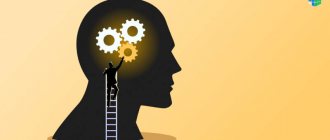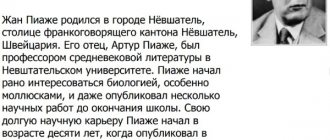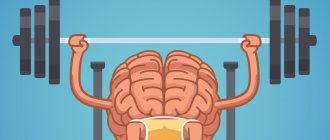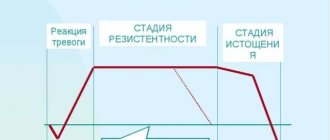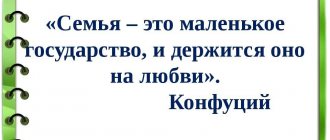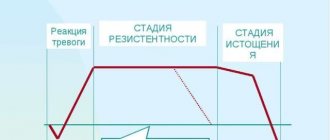Abstract to the Russian edition
The work of the Swiss psychologist Jean Piaget presents the essence of the theoretical concept of the development of intelligence, which is the basis, the core of mental development, the construction of which he carried out in the 1930-1940s. The author considered the principles of this concept to be key for understanding the evolution of thinking in different historical eras and for various fields of knowledge; He developed, based on this position, a special direction of research, which he later called genetic epistemology. The theory, the first ideas and provisions of which were formulated by the author in the first half of the 20th century, remains relevant and is still assessed by experts as one of the most productive in experimental and practical research.
Concept of Cognitive Development Theory
J. Piaget's theory of intellectual development covers the period from infancy to adulthood. Before the development of this teaching, teachers believed that the thinking of a child differs from that of an adult only in a lesser degree of logic. The Swiss psychologist was the first to identify several features: egocentrism, syncretism, transduction.
This means that before reaching a certain age, a person perceives all phenomena and objects separately, without connecting them in a logical chain. In addition, children are insensitive to contradictions and often do not agree on the volume and content.
According to the theory, the child studies an object or phenomenon and creates his own action patterns. For example, when a baby first sees a picture of a dog, he remembers its characteristic features: 4 legs, tail, fur, muzzle. This is the pattern by which he will identify other dogs.
The development of cognitive skills occurs through the subject's adaptation to a changing environment. Jean Piaget identified three important processes:
- assimilation;
- accommodation;
- achieving balance.
These processes can be easily seen using several examples. A child who meets a dog on the street for the first time will discover that the animal can bark, lick his hand, and run fast. His previous scheme, characterizing the animal, will be supplemented with new elements. This is how assimilation occurs. If a child encounters a cat rather than a dog for the first time, the process of accommodation will begin. He will compare the image of a cat with the image of a dog he knows, and will soon find significant differences. The baby will create a new image and learn to distinguish these animals.
Both assimilation and accommodation should lead to a state of equilibrium or cognitive harmony. That is, any contradictions between the “scheme” and the environment must be eliminated as a result of mental activity.
Author's Preface to the First Edition
A book called “The Psychology of Intelligence” could cover a good half of the entire subject of psychology. But on the pages of this book the author will limit himself to outlining one general concept, namely the concept of the formation of “operations”, and will show, perhaps more objectively, its place among other concepts accepted in psychology. First, we will talk about characterizing the role of the intellect in its relation to adaptive processes as a whole (Chapter I), then, considering the “psychology of thinking,” we will show that the activity of the intellect consists essentially in “grouping” operations in accordance with defined structures (Chapter II). The psychology of intelligence, understood as a special form of balance to which all cognitive processes gravitate, poses such problems as the relationship between intelligence and perception (Chapter III), intelligence and skill (Chapter IV), as well as issues of the development of intelligence (Chapter V) and its socialization (Chapter VI).
Despite the abundance of valuable works in this area, the psychological theory of intellectual mechanisms is just emerging, and so far one can only vaguely guess what degree of accuracy it will have. Hence the feeling of searching that I tried to express here.
This little book sets out the essence of a course of lectures which I had the privilege of delivering at the Collège de France in 1942, at a time when all the university teachers were striving, in the face of violence, to express their solidarity and their fidelity to enduring values. In preparing this book, I cannot forget the reception given to me by my audience of those years, as well as the contacts that I had with my teacher P. Janet and with my friends A. Pieron, A. Vallon, P. Ginome, G. Bachelenrom, P. Masson-Ourselem. M. Mauss and many others, not to mention my dear I. Meyerson, who “resisted” in a completely different place 1.
Jean Piaget.
Stages of intelligence formation
J. Piaget's teaching on the intellectual development of a child is based on the presence of several stages in the development of cognitive skills. Each stage of development has its own characteristics.
Sensorimotor period
According to the theory of J. Piaget, the first stage of development of children's thinking begins from birth and lasts up to two years. Initially, a person has only unconditioned reflexes, which develop day by day. The baby cannot set specific goals for himself, so his first actions are always carried out by chance.
If a simple manipulation is repeated many times, a pattern of behavior is created in the child’s thinking. For example, the baby gets accustomed to a certain feeding regimen, makes noise with a rattle, learns to grab objects, listen and observe. Gradually, children move from elementary actions to more complex ones.
During the sensorimotor period, the child learns about the world around him through his senses and motor skills. Therefore, at this stage it is necessary:
- physical and emotional contact between mother and child;
- classes with objects that have different textures, shapes, colors, sizes;
- classes with images of animals, plants and other simple objects.
It is important to understand that up to 2 years of age, a child has a poor relationship between the volume and size of objects, so children are always drawn to large and bright objects. Children can only manipulate things; actions with symbols and ideas are not yet performed.
In the first months of life, means of communication include crying, smiling, laughter and tears. At 6 months of age, the first syllables begin to form, and by one year the baby can learn to speak the simplest words.
Preparation and organization of specific operations
The second stage of mental development is divided into 2 stages. The first is called the sub-period of preoperative ideas, lasting from 2 to 7 years. At this age there is a transition from sensorimotor functions to symbolic ones. This means that the child acquires the ability to distinguish the designation of a word from the signified one. For example, during a game, a table can be replaced by an ordinary box, and pieces of paper can be replaced by plates. The individual identifies these objects because he finds similarities in shape and size in them.
At the same time, the child’s thinking remains egocentric. Children have difficulty accepting someone else's point of view and are unable to put themselves in another person's place. Psychologists believe that it is precisely because of this that a child under 7 years old does not know how to deceive or joke ironically.
A Swiss psychologist conducted an experiment during which he showed children 2 identical clay balls and then rolled one of them into a sausage. Piaget asked subjects to say which object had more clay. All children under the age of 7 answered that there is more clay in a rolled sausage, since this object is longer. In psychology, these phenomena began to be called Piagetian phenomena. The results of the experiment indicate that during the sub-period of pre-operational ideas, individuals are not yet capable of reasoning and proving.
This stage of development is characterized by other interesting features:
- Developing new social relationships outside the home.
- Vocabulary increases significantly. An individual can briefly describe an object or phenomenon.
- There is a manifestation of curiosity and a desire for knowledge.
- Inanimate objects are often endowed with the properties of living organisms. This phenomenon is called animism.
A child can perform many complex actions, but at the same time he does not fully understand the rules and mechanisms. That is why the sub-period is called pre-operative.
From 7 to 11 years of age, the sub-period of specific operations continues. To solve problems, the individual begins to use logical and mathematical operations. A person masters the concept of conservation of matter and easily distinguishes objects by shape, size and volume. However, children under 11 years of age need a clear example to perform operations. Abstract thinking is not yet used at this stage.
The final stage
The last stage of mental development is the stage of formal operations. It is typical for children from 11 to 15 years old. In developmental psychology, several features of this stage are distinguished:
- The individual thinks in whole sentences.
- The ability to invent objects and situations that do not exist in reality appears.
- Children can make guesses and hypotheses.
- The learning process is perceived as a single system.
At each identified stage, an individual can achieve three results: success, partial success or failure. The age limits in Piaget's theory are very approximate.
The psychologist acknowledged that a child may spend more time mastering one skill and less time developing another, so parents and teachers should be patient.
Author's Preface to the Second Edition
The reception given to this little work was generally quite favorable, which prompted us to republish it without changes. At the same time, many critical comments have been made about our concept of intelligence due to the fact that it is associated with higher nervous activity and the process of its formation in ontogenesis. It seems to us that this reproach is based on a simple misunderstanding. Both the concept of “assimilation” and the transition from rhythmic actions to regulations, and from them to reversible variations, require neurophysiological, and at the same time psychological (and logical) interpretations. Far from being contradictory, these two interpretations can ultimately be reconciled. We will dwell on this essential point elsewhere, but in no case do we consider ourselves entitled to begin to resolve this issue until the detailed psychogenetic studies of which this little book is a summary have been completed.
Jean Piaget. October 1948.
Essence of the method
At a young age, Jean Piaget was interested in biology and constantly observed animals. The future scientist in the field of psychology presented the findings in detail in articles. The basis of his scientific life was the identification of the characteristics of children's and adolescent thinking.
The young researcher became a teacher at a boys' school in Paris. The director of the school was Binet, the inventor of IQ testing. Piaget collaborated with the leader, constantly helping him in processing the results.
According to the observations of a psychoanalyst, children of the same age category made approximately the same mistakes that adults never made. This became the basis of the future theory, which consists in the fact that human thinking undergoes a certain transformation at each age stage.
Piaget observed not only schoolchildren, but also his own children. The basis of the scientist’s scientific work was experiments. The psychologist also used the conversation method, which gave him a broad understanding of children's logic.
According to Piaget's theory, the main core of development of the mental sphere is intelligence.
Gradually, the child develops a more adequate scheme for understanding a certain situation, and the adaptation that occurs when interacting with the environment is traced. Each stage has typical logical errors.
Criticism of the main provisions of the theory
Many scientists were critical of Piaget's idea of the nature of intellectual capabilities and the factors of their development. In his scientific work, the researcher did not deny the social role, but considered the biological factor to be decisive.
According to the psychologist, favorable conditions can only accelerate the change of stages, but no more. L. Vygotsky, M. Cole, Alexei Leontiev and many others disagreed with the scientist on this issue. Often disagreements in scientific circles were caused by the distinction between age periods and stages of thinking.
The psychologist believed that the age limits were determined with precision, but their variability depended on the specific sample of the child. According to Piaget, the formal layer of logic becomes accessible to teenagers.
But many experiments by other researchers have shown that boys and girls often fail to cope with the tasks assigned to them.
Research by L.S. Vygotsky, A.N. Leontyev, M. Cole, J. Werch do not contradict the scientific views of Piaget in that the formal logical stage of development is considered the highest level, but psychologists, in particular Daniil Elkonin, doubted that after 15 years the intellect ceases to undergo changes.
After all, a complex skill or activity requires constant improvement, and the thinking of a young person is fundamentally different from the logic of an experienced leader.
